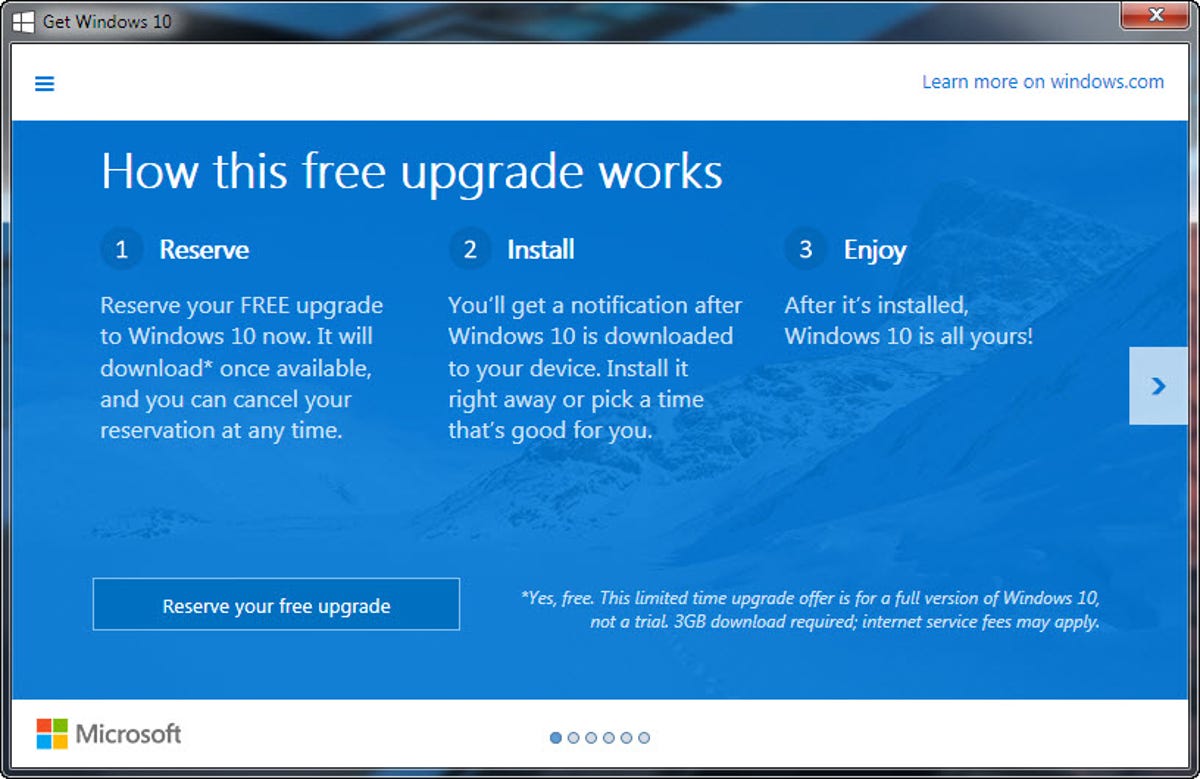
Screenshot by Lance Whitney/CNET
Microsoft has a grand plan to get its next operating system, Windows 10, running on 1 billion devices in three years — by giving it away for free. Well, sort of.
The software, which Microsoft announced Monday will begin rolling out July 29, will be offered as a free upgrade for all Windows 7 and Windows 8.1 PC and tablet users. For the PC market, those two versions power 74.1 percent of all devices, according to NetMarketShare.
For everyone else, Windows 10 will cost the same as its predecessor, Windows 8, the company confirmed to CNET on Monday.
Related Links
- Microsoft’s Surface Studio: A desktop creation station with a magic dial
- Microsoft’s Surface Books get massive battery life boost
A copy of Windows 10 Home will run $119, while Windows 10 Pro will cost $199. For those who wish to upgrade from the Home edition to the Pro edition, a Windows 10 Pro Pack will cost $99.
Microsoft may have given the impression it was making a critical pricing change to its flagship operating system when it announced in January that, like competitor Apple, it would offer an upgrade free of charge. However, the company has been transparent from the beginning that the upgrade is only eligible for one year, until July 29, 2016, and has said at various points in the past few months that pricing for single licenses would stay on par with previous releases. Now, there is the possibility that future versions of Windows may follow this same path, meaning Microsoft may never go fully free with its OS.


Now playing:
Watch this:
Why Microsoft needs Windows 10 to be a hit
1:47
Microsoft says copies of the software will be available online and in stores. Retailer Newegg, which appeared to have leaked pricing and release date information this past weekend, still has pages for Windows 10 Home and Pro live on its website, although its pricing says $110 for Home and $150 for Pro and is not updated to reflect Microsoft’s confirmed pricing.
For those eligible for the free upgrade, the process will only grant you an equitable version of the software. That means if you had Windows 7 Home, you get Windows 10 Home. If you had Windows 8.1 Pro, you get Windows 10 Pro. See here for more details. For more information on how to check your upgrade eligibility and reserve your upgrade for the July 29 rollout, check out CNET’s guide.
As for why one would be buying Windows 10 in the first place, single licenses are useful for the minority of users who don’t have an eligible machine or wish to build their own computer in the coming months and install Windows themselves.




